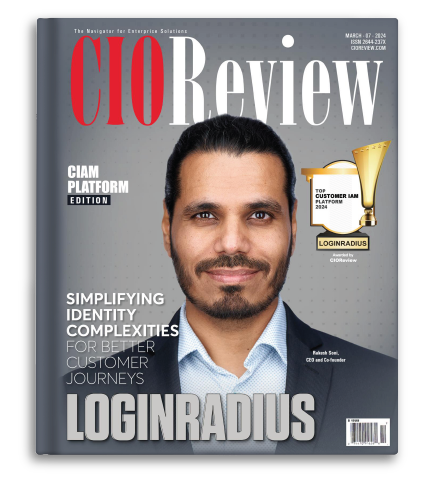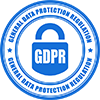Introduction
Three main properties determine the secure state of processed information - its confidentiality, availability, and integrity. Password authentication was one of the first barriers in data protection that appeared in IT systems simultaneously with operating systems.
For almost 20 years, it has been the first line of control. Obviously, among the main advantages of this method of protection are its familiarity and simplicity. Hardly anyone would dispute that many organizations use password authentication.
However, according to Trace Security, 81% of information security incidents happen because of weak passwords. The analysts thoroughly investigated the vulnerabilities of information security systems. The main conclusion reached as a result: weak user passwords are the most vulnerable point used by intruders in both large and small companies.
Weak passwords are bad, but the flip side of using complex passwords is that they are difficult to retain in a person's memory. As a consequence - the carelessness of keeping them in the form of work records, and in this case, it makes no difference whether the login/password pair is written down in an employee's notebook or is located in the password manager.
Knowing the tradition of handling such data by employees, it is not too difficult for an intruder to obtain this information. If we consider the often used "synchronization" of passwords for access to various applications and corporate systems, the information security of the enterprise becomes the digital dust.
Despite the wide range of technological solutions, the choice of authentication methods is not great. One-factor or password authentication for the secure operation of information systems in a developed business is no longer enough.
The strengths and weaknesses of multi-factor authentication are generally known. The advantages include its ability to protect information from both internal threats and external intrusions. A definite weakness may be considered the need to use additional hardware and software systems, data storage, and reading devices. At the same time, there are currently no or negligible statistics on hacks on systems that use two-factor authentication.
Password protection is popular but not ideal, so businesses have to use additional tools. SSO is a powerful and effective tool for simplifying employee access to personal websites and applications.
What is the Authentication Process and Single Sign-On (SSO)?
Authentication is a process that consists of two steps:
- Confirm the identity of a user.
- Providing the necessary level of authorization.
Authentication can be single-factor, two-factor (2FA), or multi-factor. The latter option is more secure because it involves not only a username and password but also additional factors. One example is SMS or push notifications in a mobile app.
Multi-factor authentication, which uses two or more different methods, provides the most security. Multi-factor authentication has a major hiccup: a user has to take the time to prove their identity each time they need to gain the required level of access. Single sign-on technology solves this problem.
Single Sign-On (SSO) allows users to securely authenticate to multiple applications and websites by logging in only once with a single set of credentials. It frees companies from having to store passwords in their databases, which reduces the time it takes to troubleshoot login issues, minimizing the damage from hacking and other attackers.
How Single Sign-On (SSO) Works?
- The website or application verifies that SSO authentication has been performed.
- If a positive response is received, the user is granted access.
- If not, they are redirected to the SSO, where they must enter their username and password.
- SSO asks for authentication to verify identity.
- After successful verification, the user is let into the website or application (without saving data).
- Each new page transition initiates the user authentication procedure.
Benefits of SSO and 2FA Integration
Integrating Single Sign-On (SSO) with Two-Factor Authentication (2FA) provides a robust security framework with several benefits:
Enhanced Security
Combining SSO and 2FA creates a multi-layered defense against unauthorized access. Users not only need their credentials but also an additional verification method, significantly reducing the risk of breaches.
Streamlined User Access
With SSO, users can log in once to access multiple applications and services. Adding 2FA to this process adds an extra layer without requiring users to manage multiple sets of credentials for different platforms.
Improved Compliance
Many industries and regulatory bodies require strong authentication measures. The integration of SSO and 2FA ensures compliance with security standards and data protection regulations.
Reduced Password Fatigue
Users no longer need to remember multiple passwords for various applications. SSO simplifies access, and 2FA adds security without increasing the burden on users to remember complex passwords.
User Experience in SSO and 2FA Environments
In an SSO and 2FA environment, users can get a number of advantages pertaining to user experience, including:
Convenience
SSO allows users to access all authorized applications with a single login, enhancing convenience and productivity. They don't need to repeatedly enter credentials for each service.
Minimal Disruption
Implementing 2FA in an SSO environment adds an extra layer of security without significantly disrupting the user experience. Once logged in, users may need to provide a second factor only occasionally or during sensitive transactions.
Enhanced Security Awareness
Users become more security-conscious due to the additional authentication step. They are more likely to recognize and report suspicious login attempts or phishing attacks.
Common Challenges and Solutions
Balancing Security and User Convenience
Solution: Implementing adaptive authentication in the SSO and 2FA setup. This approach dynamically adjusts the authentication requirements based on risk factors such as device, location, and user behavior.
User Resistance to 2FA
Solution: Educate users about the importance of 2FA in enhancing security. Highlight the ease of use and benefits, such as protection against unauthorized access and data breaches.
Integration Complexity
Solution: Choose SSO and 2FA solutions that offer seamless integration with existing systems and applications. Test thoroughly to ensure compatibility and smooth operation.
Best Practices for Implementing SSO and 2FA
- Conduct a Security Assessment: Understand your organization's security needs and evaluate the risk profile. Identify critical systems and applications that require enhanced protection.
- Choose the Right Solutions: Select SSO and 2FA solutions that align with your organization's requirements. Look for compatibility with existing systems, ease of use, and scalability.
- Educate Users: Provide training and awareness programs to explain the benefits of SSO and 2FA. Encourage best practices such as not sharing authentication factors and reporting suspicious activities.
- Implement Multi-Factor Authentication: Incorporate multiple factors for authentication, such as something the user knows (password), has (token), and is (biometric).
- Monitor and Audit: Regularly monitor SSO and 2FA usage, review logs for any anomalies, and conduct audits to ensure compliance with security policies.
By following these best practices, organizations can effectively implement SSO and 2FA, providing a balance between security and user convenience in their authentication processes.
What Role Multi-Factor Authentication Plays in SSO?
The benefits of single sign-on are multifold. When a system has a high degree of criticality involved, a single login and password may not be sufficient to provide the necessary level of protection against unauthorized access.
In this case, the authentication process can be strengthened using multiple authentication factors. That is, in addition to entering a username and password, you need to present something else to confirm the authenticity of the user.
One-time password and FIDO U2F token technologies are used for authentication in web applications. Cryptographic certificates can also be used as an additional authentication factor.
Conclusion
To sum up, multi-factor authentication (MFA) is an important layer of security that’s becoming standard in enterprise SSO deployments. While it’s not a silver bullet, it’s likely the last line of defense in most situations, so its importance shouldn’t be overlooked. It’s already made a difference in the SSO world alone, and MFA will likely continue to have even more influence in the future.
Frequently Asked Questions (FAQs)
1. What is SSO and 2FA?
Single Sign-On (SSO) allows users to access multiple applications with one set of credentials. Two-Factor Authentication (2FA) adds an extra layer of security by requiring two types of credentials for login.
2. Can SSO be used with MFA?
Yes, SSO can be combined with Multi-Factor Authentication (MFA) for enhanced security.
3. What is the difference between MFA and 2FA?
Multi-Factor Authentication (MFA) is broader and requires two or more factors for verification. Two-Factor Authentication (2FA) is a type of MFA that specifically uses two different factors, like a password and a code from a device.
4. What does 2FA do?
Two-Factor Authentication (2FA) adds an extra layer of security to logins, requiring users to provide two types of credentials for verification.









